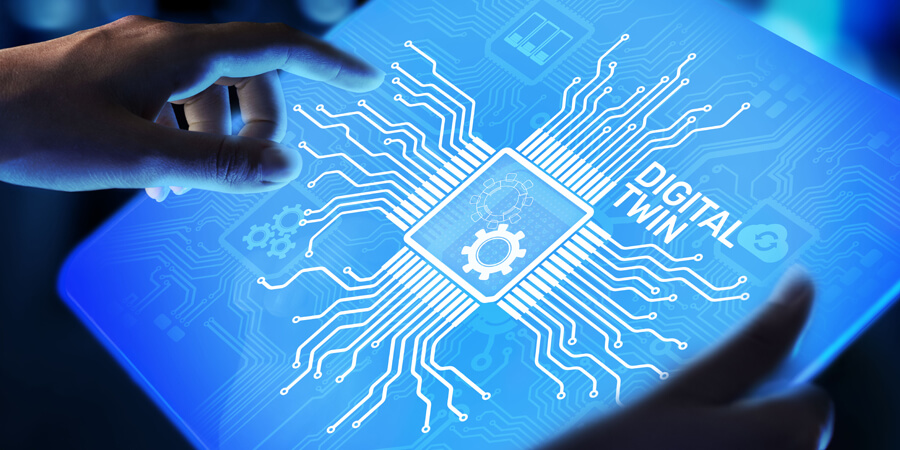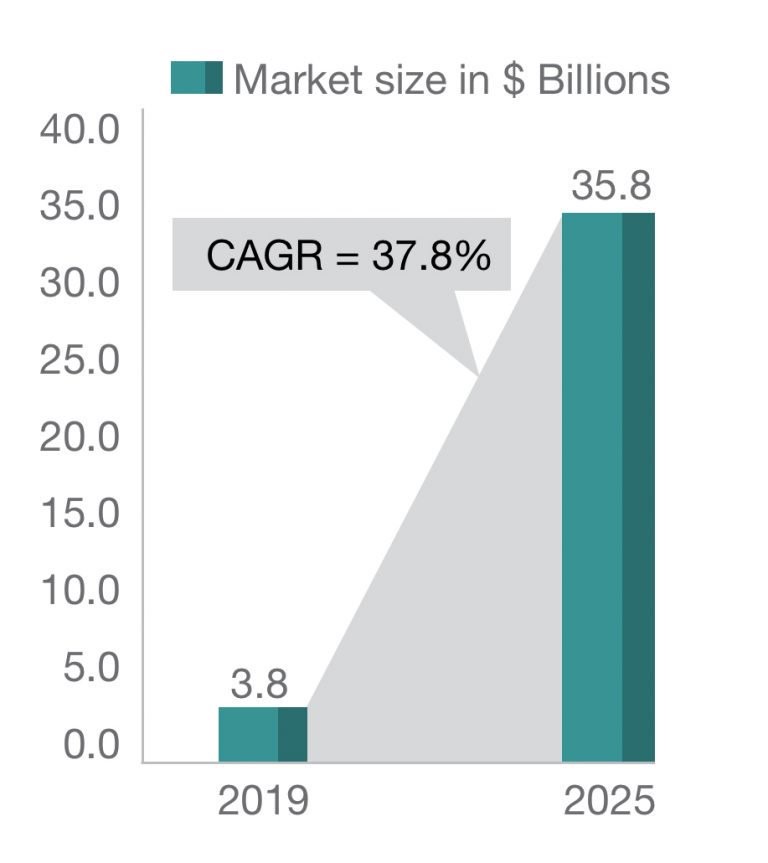Digital twin is a revolutionizing technology for telecom networks, named by the NASA. It’s a virtual representation that serves as the real-time digital counterpart of a physical object or process. A digital twin uses virtual and augmented reality as well as 3D graphic and data modelling to build a virtual model of a process, system, service, product, or other physical object. The digital twin concept consists of three distinct parts: the physical product, the digital/virtual product, and the connections between the two products.
Digital twin technology is one of the most important technologies currently available. It offers insights into all aspects of production line and manufacturing process. The purpose of a digital project twin is to improve the quality of management, avoid cost overruns and prevent time escalations of projects.
According to Gartner, 13% of organizations implementing IoT projects already use digital twins, while 62% are either in the process of establishing digital twin use or plan to do so. Its market is estimated to grow from $3.8 billion in 2019 to $35.8 billion by 2025, at a CAGR of 37.8%, according to the latest report from MarketsandMarkets.
Benefits of digital twins in different sectors
Since it can be used across a wide range of industries, from automotive to healthcare and power generation, it has already been used to solve a large number of challenges. Digital twins have found its application in many sectors, such as:
- Automobiles: Digital twins discover real confidence in creating virtual mode of a connected vehicle, catching the behavior, operational data and analysis, which helps in further developing and improving the vehicle’s performance.
- Healthcare: Digital twins allow healthcare companies to design and customize complex medical devices for individual patients, making them compatible with the individual’s unique anatomical and physiological systems. They accelerate the design process, reduce costs by lowering the need for surgery and clinical trials, greatly reduce animal testing, and produce zero side effects.
-Manufacturing: In industrial manufacturing, digital twins are utilized to simulate the production process. In light of information from sensors associated with machines, producing devices, and different tools, manufacturers can make virtual representations of a genuine item, equipment elements, production process, or an entire system. Therefore, for production purposes, such simulations help track machine operation and adjust it in real time. Augmented with machine learning procedures, digital twins help manufacturing companies identify problems before they occur and predict future outcomes.
- Retail: Digital twins help in better in store arranging, security application and energy organization in an enhanced way. In addition, they help in avoiding supply chain disruptions as retailers can combine their digital twin models with external real-time data like local traffic and weather. By doing so, they can respond to any kind of event that may disrupt their supply chain. And finally, digital twins optimize logistics costs. According to Boston Consulting Group, digital twins help retailers minimize capital expenditures by 10%, reduce excess inventory by 5%, and improve EBITDA by 1-3%.
- Industrial loT: Industrial firms with digital twin implementation can now monitor, track and control industrial systems digitally. Aside from the functional data, digital twins capture environmental data such as location configuration, financial models etc., which helps in foreseeing future tasks and irregularities.
- Telecommunications: In the telecommunications industry, a digital twin can monitor and manage complex telecom networks, while also gathering data from social media. As operators add layers of technology, including connected devices and additional spectrum bands, a digital twin can monitor and augment these complex systems in real-time. For example, Nokia has introduced Nokia 5G Digital Design concept to simulate 5G use cases. Using machine learning algorithms, the platform can influence digital twin technology to quickly monitor and assess the impact of 5G implementation, while providing automated recommendations.
How to apply digital twins in different sectors
Some of the applications for digital twins include:
- Using predictive maintenance to maintain equipment, production lines, and facilities
- Getting a better understanding of products by monitoring them in real-time as they are used by real customers or end-users
- Manufacturing process optimization
- Enhancing product traceability processes
- Testing, validating, and refining assumptions
- Increasing the level of integration between unconnected systems
- Remote troubleshooting of equipment, regardless of geographical location
What’s next for digital twins?
Digital twins’ capabilities are getting more reachable even in small organizations. This is mainly enabled by rapidly improving modeling capabilities, the spread of IoT sensor installations, and the increasing availability of tools and computing infrastructure. That’s why this technology is gaining impetus.
International data corporation (IDC) projects said that by 2022, 40% of IoT platform vendors will integrate simulation platforms, systems, and capabilities to create digital twins, and two thirds of manufacturers will use the technology to conduct process simulations and scenario evaluations. While the reasons for a digital twin may differ from sector to sector, digital twin technology can benefit businesses in all industries.
Digital twins in the Industry 4.0
The fourth industrial revolution or Industry 4.0 which holds automation, data exchange and manufacturing technologies is at the talking point of the business world. Digital twins are at the core of this new industrial revolution bringing in unlimited possibilities. They change the traditional approach of ‘first build and then tweak’ in the industrial world and bring in a more virtual system based design process that brings in the much more efficient role out of any equipment or system by understanding its unique features, performance, and potential issues if any. To conclude, digital twins give you clarity on the past, present, and future performance. Think of a digital twin as a bridge between the physical and digital world of everything.
Digital twins: new component for growing technology
Tools
Typography
- Font Size
- Default
- Reading Mode

